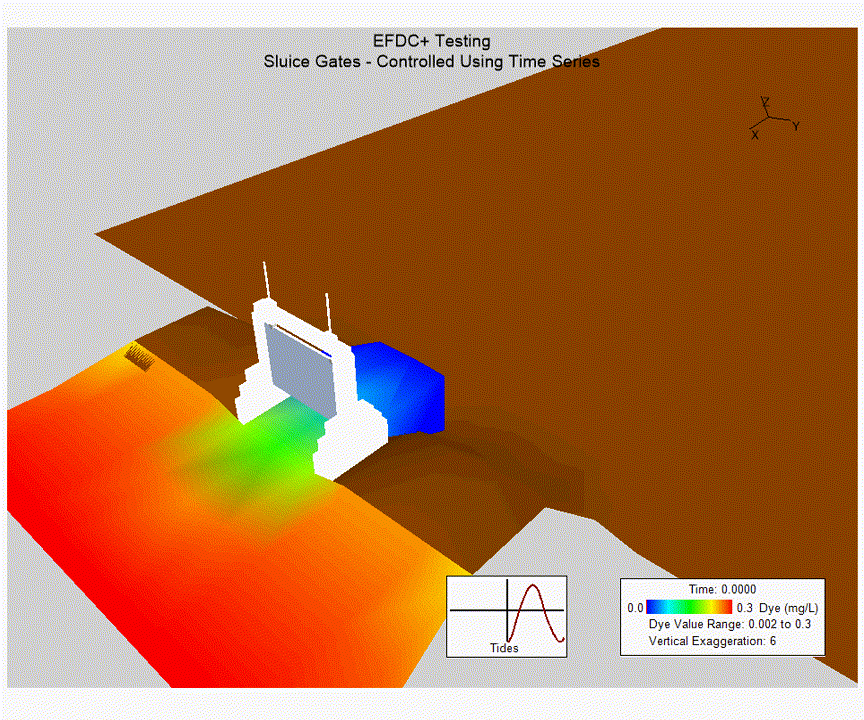Temperature
Water temperature is one of the most important physical characteristics of surface waters, impacting both density effects and thermal effects on water quality kinetics and solubility.
EFDC+ provides you a range of options to accurately simulate surface heat exchange and solar radiation attenuation in the water column. Multiple computed evaporation options are available to better represent your system.
Salinity
Variations in salinity often impact estuarine stratification more than variations in temperature. In hundreds of studies, EFDC+ has been shown to successfully predict the response of rivers and estuaries to ocean salinity changes related to seasonal variation in freshwater inflow and human activities such as harbor and ship channel deepening.

